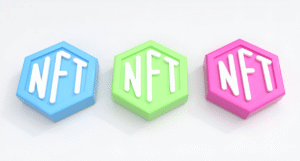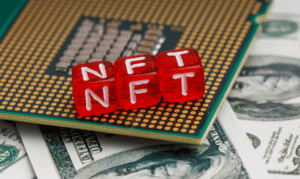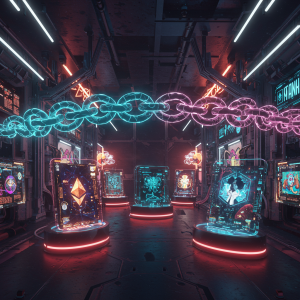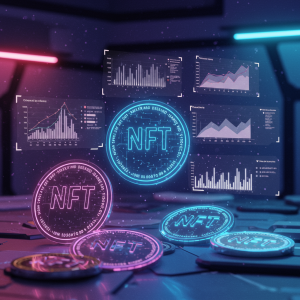What Is the Point of Having NFTs

NFTs, or non-fungible tokens, have taken the digital world by storm. From digital art selling for millions to innovative applications in gaming, real estate, and beyond, NFTs have sparked debates, excitement, and even skepticism. But what is the actual purpose of having NFTs, and why are they making such a big splash?
This blog will explore the key benefits and use cases of NFTs, break down their value, and provide insights into why they matter in today’s digital economy. By the end, you’ll have a clear understanding of why NFTs are more than just a passing trend and how they’re shaping the future of ownership and innovation.
What Are NFTs and How Do They Work
First, let’s break down what an NFT actually is.
An NFT, or non-fungible token, is a unique digital asset stored on a blockchain. Unlike cryptocurrencies like Bitcoin, which are fungible (meaning each Bitcoin is identical in value and can be exchanged 1-to-1), NFTs are unique and cannot be replaced or exchanged on a like-for-like basis. Each NFT is one of a kind, or part of a very limited edition, and it’s this uniqueness that defines its value.
NFTs are primarily built using blockchain technology, typically on Ethereum’s network, although other blockchains also support NFTs. The blockchain acts as a secure, decentralized ledger that records ownership, ensuring each NFT is authentic and verifiable. This distinction allows creators, buyers, and sellers to establish clear ownership rights and trace the history of the token.
The Value of NFTs
1. Provenance and Ownership
One of the most significant contributions of NFTs is their ability to establish clear and provable ownership over digital items. Before NFTs, it was challenging to prove the originality and authenticity of digital files like art or music. With NFTs, however, owners have a transparent proof-of-ownership record that’s stored on the blockchain. These records are immutable, meaning they can’t be tampered with or altered.
For example:
-
A digital artist can mint an artwork as an NFT and sell it to a collector, who will have irrefutable proof of ownership.
-
A musician can tokenize their songs, ensuring buyers have an official copy rather than an illegally pirated one.
2. Empowering Creators
NFTs have provided a revolutionary new revenue stream for creators. Traditionally, artists, musicians, and other creators often faced challenges with fair compensation due to intermediaries and distribution platforms taking a large cut. NFTs cut out the middlemen, allowing creators to retain more of the earnings.
Additionally, creators can program royalties into their NFTs, ensuring they earn a percentage every time their work is resold. This is something that was nearly impossible in traditional art markets or music licensing.
3. Digital Scarcity and Collectibles
The concept of digital scarcity is one of the defining features of NFTs. While digital files are typically infinitely replicable, NFTs assign a certain level of rarity that closely mirrors traditional collectibles like rare coins or baseball cards.
For instance:
-
Digital art pieces by famous creators, limited-edition sneakers tied to an NFT, or even exclusive virtual gaming items carry unique scarcity that drives demand.
-
Collectors are willing to pay a premium for digital goods they know will remain unique or part of a small, exclusive collection.
4. Interoperability in Virtual Ecosystems
NFTs are at the forefront of creating interoperability between virtual environments. Take gaming, for example. Players can earn, purchase, or trade NFTs such as virtual weapons, characters, or skins across different games, provided they share the same blockchain.
This interoperability also extends to metaverses, where users own virtual properties, wearables, and digital items represented as NFTs. These assets can be showcased, sold, or traded across virtual spaces, giving users full control and portability.
5. Investment and Speculation
While NFTs’ artistic and functional aspects are significant, they also hold value as an investment tool. Much like traditional commodities or fine art, certain NFTs can appreciate in value over time as their rarity, significance, or cultural relevance grows.
For instance:
-
The NFT for Beeple’s “Everydays” artwork sold for $69 million in 2021, making it a cultural milestone that only gained fame because of its uniqueness and demand.
-
Some NFT-focused projects offer fractional ownership, where individuals can invest in smaller shares of high-value NFTs, democratizing access to high-end markets.
6. Tokenizing Real-World Assets
Beyond the digital world, NFTs are increasingly used to tokenize and manage ownership of physical assets.
For example:
-
Real estate can be tokenized using NFTs, representing ownership or shares in a property. This creates fractional ownership opportunities, making high-value assets accessible to more people.
-
Limited-edition luxury items like sneakers or handbags can have NFTs tied to them, ensuring reduced counterfeiting and seamless resale on secondary markets.
Applications of NFTs Across Industries
Art and Music
NFTs are revolutionizing creative industries by empowering artists and musicians to monetize their work directly. Platforms like OpenSea and Rarible allow creators to mint and sell unique digital artworks, while musicians can release limited-edition NFTs tied to singles, albums, or exclusive fan experiences.
Fashion and Luxury Goods
Fashion brands are leveraging NFTs to create virtual clothing collections within the metaverse. Some brands also issue NFTs as digital certificates of authenticity for luxury items like watches, handbags, or sneakers.
Sports and Entertainment
Sports fans can purchase collectible memorabilia as NFTs. For example, the NBA’s Top Shot platform allows fans to own highlights of their favorite basketball players. Similarly, NFTs are being used for concert tickets, granting secure and anti-counterfeit access.
Real Estate
NFTs are starting to transform buying and selling property. By tokenizing real estate as NFTs, the process becomes more efficient, transparent, and accessible. Investors can also fragment ownership of properties through NFTs.
Education and Credentials
NFTs offer a practical way to issue verifiable certificates, diplomas, or badges for academic institutions or professional training programs. These credentials can be universally recognized and stored digitally without risk of fraud.
Why NFTs Matter in the Long Run
The true point of having NFTs lies in their ability to redefine ownership, create value for creators, and push the boundaries of technology in our daily lives.
While skepticism around NFTs remains, they’ve already proven their potential in decentralizing industries, promoting transparency, and enabling fairer opportunities for creators and users alike. From art to real estate, their versatility and impact on traditional systems show that NFTs are far from a passing trend.
How You Can Explore the NFT Space
Whether you’re an artist, a collector, or simply curious about this evolving phenomenon, NFTs offer endless opportunities to explore. Start by researching reputable NFT platforms like OpenSea, Binance NFT, or Rarible. Engage with communities on platforms like Discord or Twitter to learn from experienced users, and always approach NFT purchases with caution and research.
NFTs represent a new way of interacting with the digital and physical world. And the best part? We’re only scratching the surface of what they’re truly capable of.








